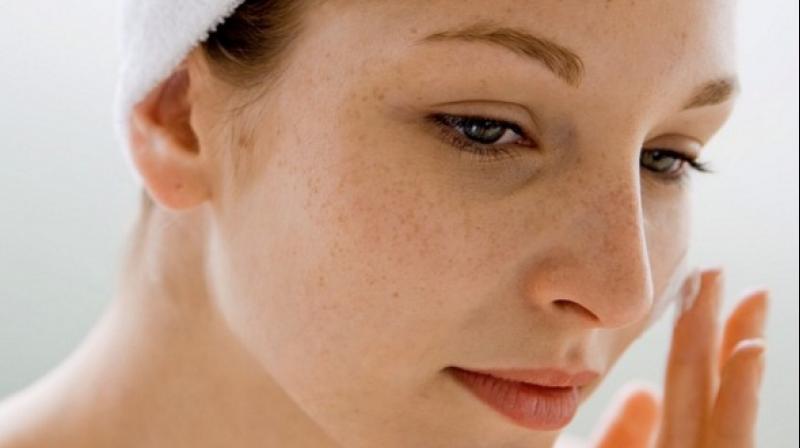
Traffic-related air pollution and gases associated with air pollution may lead to the formation of dark spots on the skin, known as lentigines, or “liver spots,” says research published in the Journal of Investigative Dermatology.
Lentigines are small, darkened areas of the skin that tend to appear on the face, forearms, hands and upper body. They may start small but can grow bigger, and smaller patches can merge. They are normally brown but can range from yellow-tan to black.
They affect light-skinned people, in particular. In the US, 90% of white people older than 60 years and 20% of those younger than 35 years develop them as a result of sun exposure.
Lentigines contain a higher number of the melanin-forming skins cells (melanocytes) than the surrounding skin. They are generally benign, although some may be pre-cancerous.
Both nitrogen dioxide (NO2) and soot, or particulate matter, are found in higher concentrations in traffic-related air pollution.
Dr. Jean Krutmann, of the IUF-Leibniz Research Institute for Environmental Medicine in Dusseldorf, Germany, had already found that skin is affected by air pollution, including a link between traffic-related soot exposure and the prevalence of lentigines.
Exposure to NO2 has been associated with decreased lung function and lung cancer, but the effect of NO2 on human skin has been unclear.
Lentigines develop on faces of women exposed to NO2
Dr. Krutmann led a large-scale study of women from Germany and China to investigate a possible link between air pollution and lentigines.
The German group comprised 806 white women with an average age of 73.5 years, ranging from 67-80 years. They spent 2.6 hours a day in the sun, on average, and 61% of them used cosmetics with sun protection. Twenty percent of them had a history of smoking,
The Chinese group included 743 Han Chinese women from the Taizhou region in China, with an average age of 59, ranging from 28-70 years. They spent an average of 3.5 hours a day in the sun, but only 4.2% of this group used cosmetics with a sunscreen. Again, 20% of the women had a history of smoking.
The German group were exposed to NO2 at an average level of 28.8 µg/m3, and the Chinese women were exposed to 24.1 µg/m3.
Photo reference scales were used to evaluate the spots and a validated skin aging score system (SCINEXA) was used to quantify them.
Higher levels of NO2 were not linked to the formation of lentigines on the back of the hands or forearms, but they did seem to increase the likelihood of patches on the cheeks of both German and Chinese women aged over 50 years, particularly the cheeks of Asian women.
Overall, an increase of 10 µg/m3 in NO2 concentration was associated with approximately 25% more dark spots.
When the researchers performed analyses to identify whether the main cause of the spots was the concentration of particulate matter or NO2 gas, they found that NO2 had a slightly stronger effect.
Protecting the skin against air pollution
But the more interesting aspect, he added, is the idea of developing the equivalent of ultraviolet (UV) filters to protect against pollution.
Dr. Krutmann explained to MNT that particulate matter contains carbon particles, which are covered on the surface by what we call polyaromatic hydrocarbons. These polyaromatic hydrocarbons, he said, are lipophilic, which means they can dissolve in oil. This enables them to penetrate through the outer layer of the skin to reach viable skin cells.
The hydrocarbons can activate these cells, he continued, through the function of the aryl hydrocarbon receptor (AHR) causing oxidative stress. Therefore, products containing specific antioxidants may offer some protection against the pollution and the skin damage.
However, Dr. Krautmann told us that a more “upstream” solution of blocking the receptor would be more efficient.
He added that they have already developed an antagonist for this receptor, which is a cosmetic ingredient that can be put into creams to provide protection against pollution.
Source: medical news today

